Several labs in the Department are directly addressing the current pandemic. Below is a list of research that our faculty are doing related to diagnostics and treatments for coronavirus and Covid-19. MIT ChemE provides an unparalleled skillset for approaching biomedical problems: almost a third of our faculty are working in areas related to human health. The following projects have been designated by the Institute as critical to the current crisis.
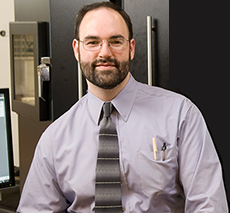
Michael S. Strano
Carbon P. Dubbs Professor in Chemical Engineering
Strano and colleagues design a heated face mask to filter and inactivate coronaviruses. The reusable mask would include a heated copper mesh that’s powered by a battery and surrounded by insulating neoprene.
Read More >>
MIT News: Carbon nanotube-based sensor can detect SARS-CoV-2 proteins (10/26/21)
MIT News: Engineers design a heated face mask to filter and inactivate coronaviruses (10/21/20)
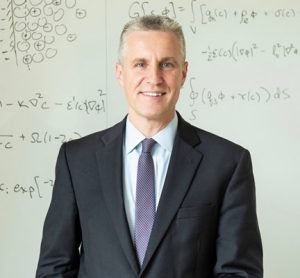 Martin Z. Bazant
Martin Z. Bazant
E. G. Roos (1944) Professor of Chemical Engineering, Digital Learning Officer, Professor of Mathematics
The epidemiological community has raised the alarm that COVID-19 is primarily transmitted through infected indoor air, but no quantitative measure is available to protect against this mode of transmission. Existing guidelines prescribe a minimum social distance (6 feet in the U.S.) or a maximum occupancy (25 persons in Massachusetts) for any indoor space, but clearly the exposure time, room size, ventilation system, respiratory activity, and facemask use must also be considered. Indeed, it is common sense that standing 6 feet away from an infected person is safe for a few seconds, but not for a few days; that 25 people may be safe in a grocery store, but perhaps not in a crowded bar; that close contact may be safe in a well ventilated laboratory, but not in a sealed tent; that social distance and plastic shields may protect against coughs and sneezes, but not against infected droplets from normal breathing, which can quickly spread to all corners of a room.
Consistent with this intuition, Professor Bazant has used mathematical models from chemical engineering and epidemiology to develop an appropriate safety guideline for well-mixed indoor spaces. The guideline is parameterized by the latest data for COVID-19 spreading and respiratory aerosol emissions and made publicly available in an easy-to-use online app and Excel spreadsheet. The guideline can also be converted into safe levels of exhaled carbon dioxide, which can be monitored using inexpensive sensors in real time. Running the numbers suggests that many classrooms may safely re-open for normal occupancy with facemasks, while more aggressive control of cumulative exposure time and ventilation could save lives in nursing homes.
This work involves collaboration with Professor John Bush, an expert in respiratory fluid dynamics.
Professor Bazant is also teaching the Physics of COVID-19 Transmission in a self-paced massive open online course (MOOC) on edX.
Read More >>
Carbon dioxide monitors could track indoor COVID-19 risk in near real-time (10/4/21)
Social distancing indoors may provide ‘false sense of security,’ covid transmission study finds, Washington Post (4/27/21)
COVID-19 Indoor Safety Guideline (PNAS published article – (4/21)
Method to assess Covid-19 transmission risks in indoor settings – MIT News (4/15/21)
Beyond Six Feet: A Guideline to Limit Indoor Airborne Transmission of COVID-19 (9/1/20)
Monitoring carbon dioxide to quantify the risk of indoor airborne transmission of COVID-19 (4/20/21)
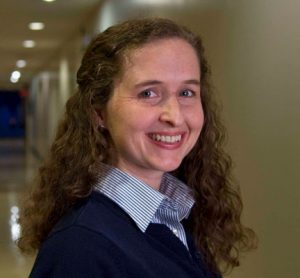 Hadley Sikes
Hadley Sikes
Associate Professor and Esther and Harold E. Edgerton Career Development Professor
Hadley Sikes’s group is working to develop protein-based tests that can indicate current or past Covid-19 disease. The currently available tests are RNA-based tests that are difficult to produce at the necessary scale and must be processed in a lab, which has led to widely publicized backlogs that have complicated efforts to track the disease. Tests for Covid-19 that are similar to pregnancy tests are beginning to be reported. Questions remain regarding their sensitivity and specificity, and these tests are also difficult to optimize and scale. The Sikes Group is developing new paper-based multiplex rapid diagnostic tests (RDTs) for viral protein biomarkers in a range of bodily fluids which would indicate active infection, and would give results in a period of minutes rather than hours with no need for supporting lab infrastructure. Lab member Eric Miller was able to manufacture new recognition elements for Covid-19 proteins in a matter of weeks, and these proteins are inexpensive and easy to produce at scale. They envision that these tests could be deployed to community clinics, airports, schools, companies or any populated communities to perform the first line screening for SARS-CoV-2 symptomatic and asymptomatic infection to triage suspected COVID-19 cases in a timely manner.
Their group is also developing these same tests for antibodies in the blood which would indicate past exposure. In addition to testing for seroconversion against the Spike (S) protein, they are also developing tests for seroconversion against the nucleocapsid (N) protein, which may be more highly expressed and lead to a more accurate test with fewer false results. They’re currently collaborating with a major industrial partner to be able to manufacture both tests at the necessary scale in the time frame that will have an impact.
Read More >>
New 10-minute test detects Covid-19 immunity (11/22/21)
Sikes Lab collaborates with 3M to develop rapid Covid-19 test (7/14/20)
Hadley Sikes designs simple-to-use diagnostic devices that could benefit patients around the world (5/18/20)
Hadley Sikes answering 3 questions on searching for a Covid-19 protein test (4/17/20)
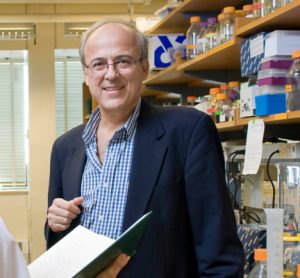 Gregory Stephanopoulos
Gregory Stephanopoulos
Willard Henry Dow Professor in Chemical Engineering
Prof. Stephanopoulos’s lab is working on engineering microbes for the overproduction of natural products that can be used as antiviral drugs in the treatment of COVOD-19 infections. The team is developing cost effective and scalable technologies for the biosynthesis of promising antiviral molecules.
 Gregory Rutledge
Gregory Rutledge
Lammot du Pont Professor in Chemical Engineering
The Commonwealth of Massachusetts Emergency Management Agency recently estimated that combined demand for N95 respirators and protective surgical masks will be around 7 million units per month for the next six months, a quantity that simply cannot be met by existing supply or current production capacity. Already, doctors and nurses in hospitals are resorting to decontamination and re-use of old respirators, using questionable sterilization procedures, and fabrication of new masks using materials at hand, of unknown quality. Supplies flown in from other countries to meet this demand are often of unknown quality and questionable provenance; some have even been recalled.
The Rutledge Lab at MIT is evaluating the particulate filtration efficiency of various fabrics and materials for aerosols in the size range from about 20 to 850 nm, relevant to the current COVID-19 crisis. It can also measure pressure drop as a function of filtration time, to determine whether such materials remain “breathable”. With this project, they aim to serve the teams of healthcare workers and other early responders on the front lines of the current pandemic by providing reliable information and immediate guidance around the selection of materials for face masks and respirators, through reliable, quantitative and forward-looking assessments of particulate filtration efficiency and inhalation resistance. In so doing, they will create a database of materials performance evaluations that may subsequently be mined for filtration and flow resistance characteristics for use by the broader community of PPE developers. This work is being done in partnership with teams at MIT, Harvard, AFFOA (Advanced Functional Fabrics of America, a Manufacturing Innovation Institute), M-ERT and local hospitals (Beth Israel Deaconess, Mass General Hospital, and Brigham and Women’s Hospital). In addition, the Rutledge group has begun to field requests from hospitals around the country who are approaching them for similar guidance.
Read More >>
Rutledge lab is featured in the second episode of “Project Frontline: Building a Response”, a documentary about the government/industry/university response in Massachusetts to the COVID pandemic in spring of 2020. [Part II: 11:32-minute mark]
Lincoln Labs works with Rutledge lab to test uncertified N95 masks (5/13/20)
 Christopher Love
Christopher Love
Associate Professor and Raymond A. (1921) and Helen E. St. Laurent Chair in Chemical Engineering
Chris Loves’s group works to accelerate the development and accessibility of biopharmaceuticals and vaccines for patients globally through bioengineering. They recently developed end-to-end automated production of multiple biopharmaceuticals and potential vaccine components with clinical-grade quality in a bench-top system. Currently, they are advancing recombinant COVID-19 vaccine components intended for low-cost manufacturing and global access. A significant challenge for any vaccine will be the scalability of production to generate sufficient doses. For example, 1 billion doses may require as much as 10-100 kilograms of protein—large volumes for the current manufacturing infrastructure. The Love Lab is using an integrated approach combining biological insights for molecular and host cell design and new ways for integrated and continuous operations of production and purification to address this challenge directly. They are advancing a minimal vaccine concept as well as more advanced structures from the COVID-19 Spike protein with the intent of realizing scalable and low-cost manufacturing for global health. They are already connecting with vaccine manufacturers in developing countries and labs with appropriate animal models to test concepts and advance towards clinical studies anticipated as early as this fall.
Read More: Love Lab developing Covid-19 vaccine to potentially reach billions (4/22/20)
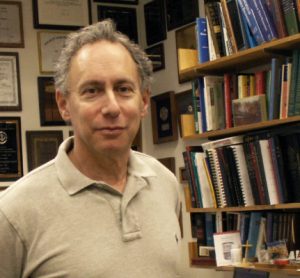 Robert Langer
Robert Langer
David H. Koch Institute Professor
Prof. Langer has several Covid-related projects:
- On Jan. 11, Chinese authorities shared the genetic sequence of Covid-19. Just two days later, members of a research team from Moderna Therapeutics, in collaboration with the National Institutes of Health, finalized the design of a vaccine they hope will prevent infection from the disease. Moderna was founded by Langer, investor Noubar Afeyan PhD ’87, and researchers from Harvard Medical School in 2010. The company develops treatments that leverage specialized transporter molecules in cells known as messenger RNAs. Messenger RNAs bring instructions from genes to the cellular machinery that makes proteins. By creating specially modified mRNA, Moderna believes it can develop therapies to treat and prevent a number of diseases in humans. Following its design of a potential Covid-19 vaccine, the company quickly moved to manufacture the mRNA vaccine for clinical trials. On March 16, just 65 days after Covid-19 was sequenced, Moderna began human trials, according to the company. The first stage of the trials is expected to last six weeks and will focus on the safety of the vaccine as well as the immune response it provokes in participants. The company has said that while a commercially available vaccine is not likely to be available for at least 12-18 months, it is possible that under emergency use, a vaccine could be available to some people sooner. For more info, go to http://news.mit.edu/2020/mit-companies-covid-19-0326
- Collaboration with New Balance and Brigham and Women’s Hospital to advise on fabrication of N95-like masks for our healthcare workers. New Balance has the ability to re-purpose their manufacturing for this and has quickly made several prototypes which now need to be tested. The Langer Lab tests the breathability of the newly developed masks according to standard test methods for air permeability of textile fabrics (ASTM D737-96 standard). If one of the prototypes qualifies through the standard testing, New Balance would start producing these masks in bulk which would greatly help replenish the supplies at the local hospitals so the clinicians can stay healthy as they treat the Covid-19 patients.
- Developing an invisible, on-patient medical record to address the need for accurate medical record keeping in low resource settings (where no centralized database is available) and during disease outbreak/mass vaccination campaigns where large numbers of people are vaccinated in a short period of time and where the movement of large numbers of people hinders accurate disease management. The medical record is composed of near-infra red absorbing/emitting microparticles (which are invisible to the naked eye) embedded in dissolvable microneedle arrays. Once applied to the patient the microneedle array dissolves and the specific pattern of the microneedle array is transferred to the dermis of the patient via the spatial distribution of the fluorescent microparticles.
- First generation technology was recently developed with support from the Bill and Melinda Gates Foundation (BMGF) and published in Science Translational Medicine. We are currently adapting this technology for applications that could potentially help mitigate the current Covid-19 pandemic where accurate medical records are of the utmost importance and where the movement of people is highly linked to the spread of disease.
- Developing a single injection delivery system that can deliver multiple doses of an active agent in a single injection (e.g. Covid-19 vaccines that are currently being developed and/or being tested in clinical trials) that induce strong neutralizing antibody titers earlier than multiple bolus injections. Such a delivery system could be particularly useful during an outbreak period such as the current Covid-19 pandemic, which requires rapid protective immunity while maintaining limited patient interactions. This platform technology was published in Science with support from BMGF and allows for essentially any drug or vaccine to be incorporated and delivered via a single injection, yet can carry additional doses which stay in the body and release weeks or months later.
- The focus of this BARDA supported project is to develop a vaccine printer that allows for a rapid, point of care response by producing large numbers of stable vaccination patches for use during disease outbreaks or mass vaccination campaigns. Our approach is focused on the delivery of mRNA based-vaccines, including a Covid-19 mRNA formulation similar to the one currently in phase 1 clinical trial. Additionally, this platform can be expanded to deliver a variety of vaccine antigens and adjuvants. An invisible dye will also be added to the vaccine so one can easily identify and track who has been vaccinated for better resource management during outbreaks and emergency situations such as the current Covid-19 pandemic.
- Along with Professor Giovanni Traverso, Langer is developing drug delivery systems involving therapeutic depots that enable single administration of anti-viral technologies and facilitate mass drug administration.

